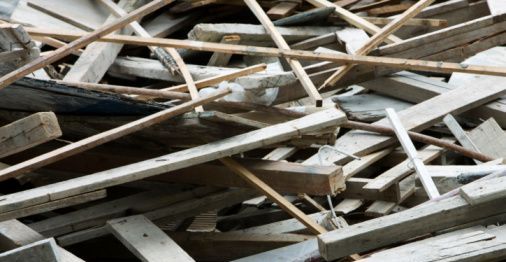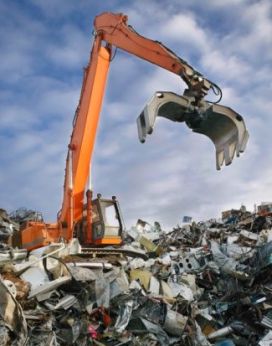With the economical crisis, the trend of renovation and the creation of passive homes decreased in all the main social structures. Still out of the great need of consuming less energy many private home owners took the logical step in creating passive homes with a low carbon foot print.

We all know how much debris is resulted when enlarging a room or remodeling a house especially if there are walls coming down. The huge amount of demolition waste is unavoidably becoming part of the landfills spread all over the Earth.
With the great need for green building and LEED certification program the demolition waste management became a lot more pressing problem especially because the Smart Market Report and related studies have focused on conditioning the certification with an efficient management of this construction waste.

It is a fact that the demolition of a building swallows half of the cash a new building requires so there is no wonder that with the costs implied in recycling and reusing the demolition debris, the cost of a building or of a renovation grows exponentially.
Still conditioning the LEED certification with an efficient strategy of debris management is also responsible for creating a sustainable strategy for the construction sites and the people responsible for the projects.
Statistically only 24% out of the demolition debris goes into recycling and reusing and as the trend for green building is spreading the string of waste behind it, is a continue menace for the environment.
 What it needs to be done is rather simple and it is all part of the common strategy everyone can use from private homes to huge construction companies.
What it needs to be done is rather simple and it is all part of the common strategy everyone can use from private homes to huge construction companies.
The most common waste resulted from the demolition is made of wood, concrete, pipes, plastic, cardboard and related materials.
Recycling these materials would mean reintegrating them in the new green building. Recovering the usable out of the waste can mean reusing wood or transforming concrete waste into aggregates to be used in the new structure.
The raw debris can be grinded and contribute at enforcing the land structure and this way a huge amount of waste accumulation on landfills will be avoided.
Deconstruction is a valuable option for green renovation. Instead of generating waste by crushing walls, we should consider removing them brick by brick.
The resulted material will simply be reused in the construction or it can be offered for the construction of a social retreat that would benefit the community. The process is slower but it is worth it for it benefits the environment.









